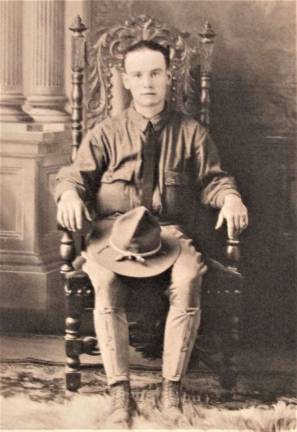WEST MILFORD – The celebration ending World War I on Nov. 11, 1918, honored those who served on the United States Military, especially those who gave their lives to keep the nation’s freedoms. Many changes in the way the day is celebrated have occurred since the first observance 100 years ago.
This year the traditional time of the observance – the 11th day of the 11th month at 11 a.m. – will be followed as usual but at a time when the Veterans Council leaders are stressing that those who survived the battles of war and came home should especially be honored on what is now known as Veterans Day with emphasis on Memorial Day in May being on those who lost their lives in the nation’s wars.
Veterans of Foreign Wars Post Commander William (Bill) Johnson and veteran activist Pat Loughman were at a recent Township of West Milford Council meeting recently saying they want people to understand the different purpose of each of the two military holidays and observe them accordingly.
Loughman said for many individuals, especially young people, this is an issue. He said Memorial Day should not be a celebration. It is to honor the men and women who died, while Veterans Day is to honor all those who served, he said.
World War I ended when the Treaty of Versailles was signed June 28, 1919. However, the fighting actually ended about seven months before when the Allies and Germany put an armistice into effect Nov. 11, 1918 at 11 a.m. This was largely considered as the end of the war.
In 1921, an unknown World War I American soldier was buried in Arlington National Cemetery. The site, on a hillside overlooking the Potomac River and the City of Washington, became the focal point of reverence for America’s veterans.
Similar ceremonies occurred in England and France where an unknown soldier was buried in each nation’s highest place of honor (in England, Westminster Abbey, in France, the Arc de Triumphe.
The day became known as “Armistice Day.”
Armistice Day officially received its name in America in 1926 through a Congressional resolution. It became a national holiday 12 years later by similar Congressional action. The idealistic hope was that World War I was the war to end all wars.
Only a few years after the holiday was proclaimed, war broke out in Europe. Sixteen and one half million Americans took part; 407,000 of them died. Those from West Milford are listed as war dead were Stephen Crissando, Ernest Rhinesmith, Elmore Terwilliger and Gerard Winters.
An answer to the question of how to pay tribute to all who had served in the latest war came in a proposal made by Representative Edwin K. Rees of Kansas: Change Armistice Day to Veterans Day and make it an occasion to honor those who have served America in all wars. In 1954 President Dwight Eisenhower introduced a bill proclaiming Nov. 11 as Veteran’s Day. Congress passed another Amendment and Veterans Day became a Day to honor all veterans of all wars.
The United States entered the war on April 6, 1917. Family stories passed down through American generations told how everyone got behind the effort to win the war. There were Liberty Loan and War Savings Stamps drives and people dealt with sacrifices of food rationing, higher prices, nights without using lights, and not using gas on Sundays. A taxation bill was even approved. People sacrificed without complaining.
Among the first fighters from the United States to arrive in France was the late Edward Genader (uncle of the author of this article). He was born and raised in Jersey City and after the war he married and moved to a home in the Echo Lake section of West Milford on what is now Macopin Road. Later he moved his family moved to Germantown Road and still later to Pompton Lakes.
